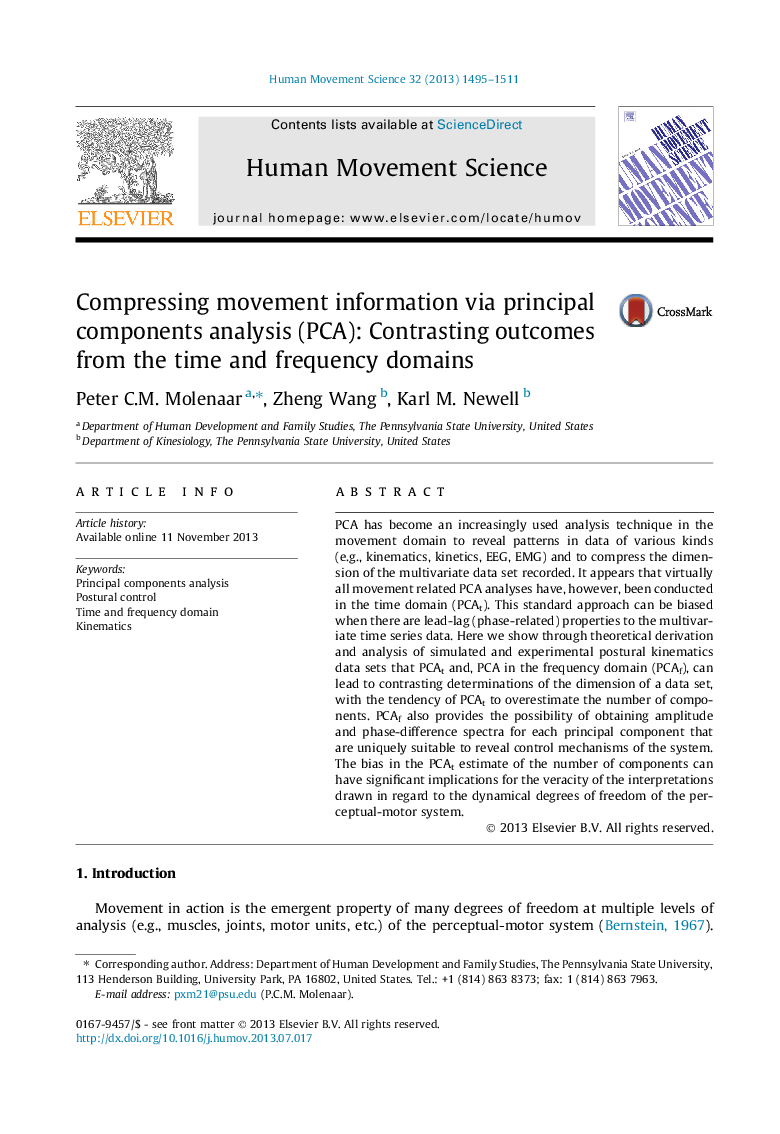| Article ID | Journal | Published Year | Pages | File Type |
|---|---|---|---|---|
| 10459160 | Human Movement Science | 2013 | 17 Pages |
Abstract
PCA has become an increasingly used analysis technique in the movement domain to reveal patterns in data of various kinds (e.g., kinematics, kinetics, EEG, EMG) and to compress the dimension of the multivariate data set recorded. It appears that virtually all movement related PCA analyses have, however, been conducted in the time domain (PCAt). This standard approach can be biased when there are lead-lag (phase-related) properties to the multivariate time series data. Here we show through theoretical derivation and analysis of simulated and experimental postural kinematics data sets that PCAt and, PCA in the frequency domain (PCAf), can lead to contrasting determinations of the dimension of a data set, with the tendency of PCAt to overestimate the number of components. PCAf also provides the possibility of obtaining amplitude and phase-difference spectra for each principal component that are uniquely suitable to reveal control mechanisms of the system. The bias in the PCAt estimate of the number of components can have significant implications for the veracity of the interpretations drawn in regard to the dynamical degrees of freedom of the perceptual-motor system.
Related Topics
Life Sciences
Neuroscience
Cognitive Neuroscience
Authors
Peter C.M. Molenaar, Zheng Wang, Karl M. Newell,
